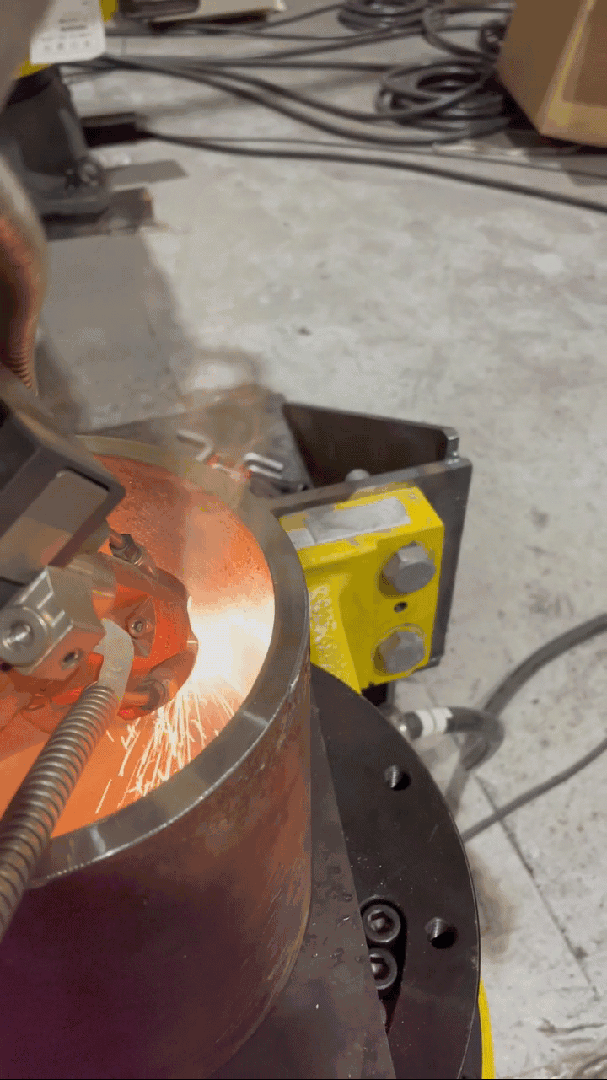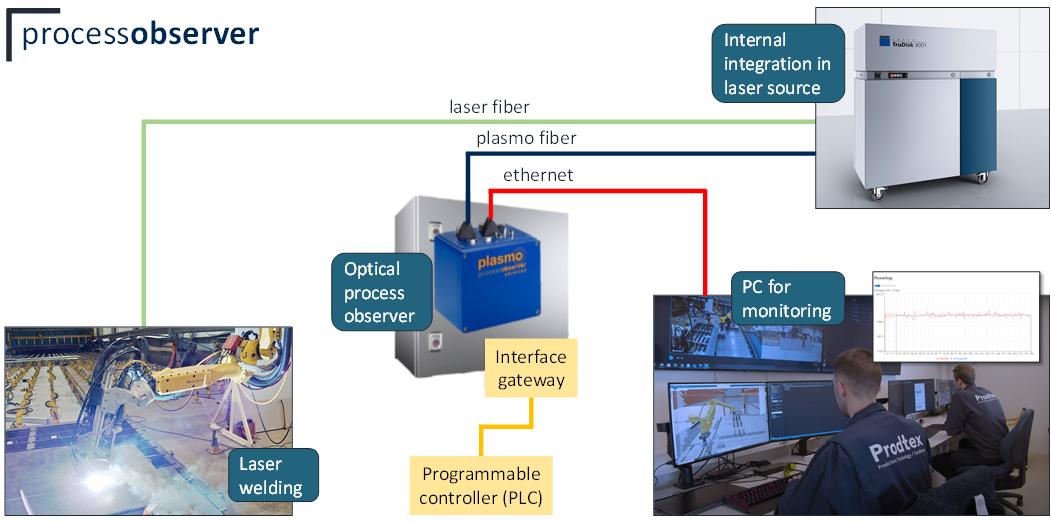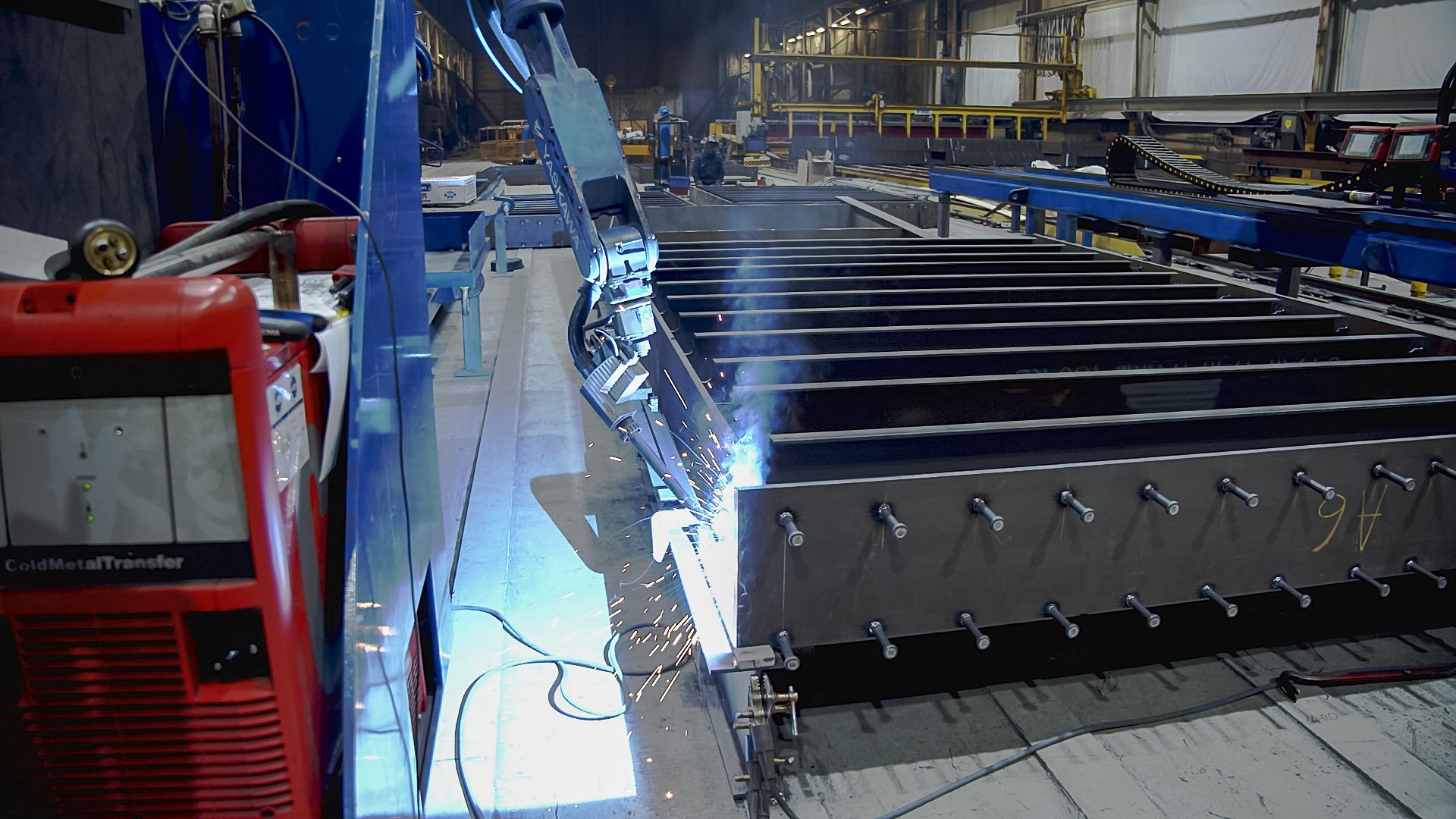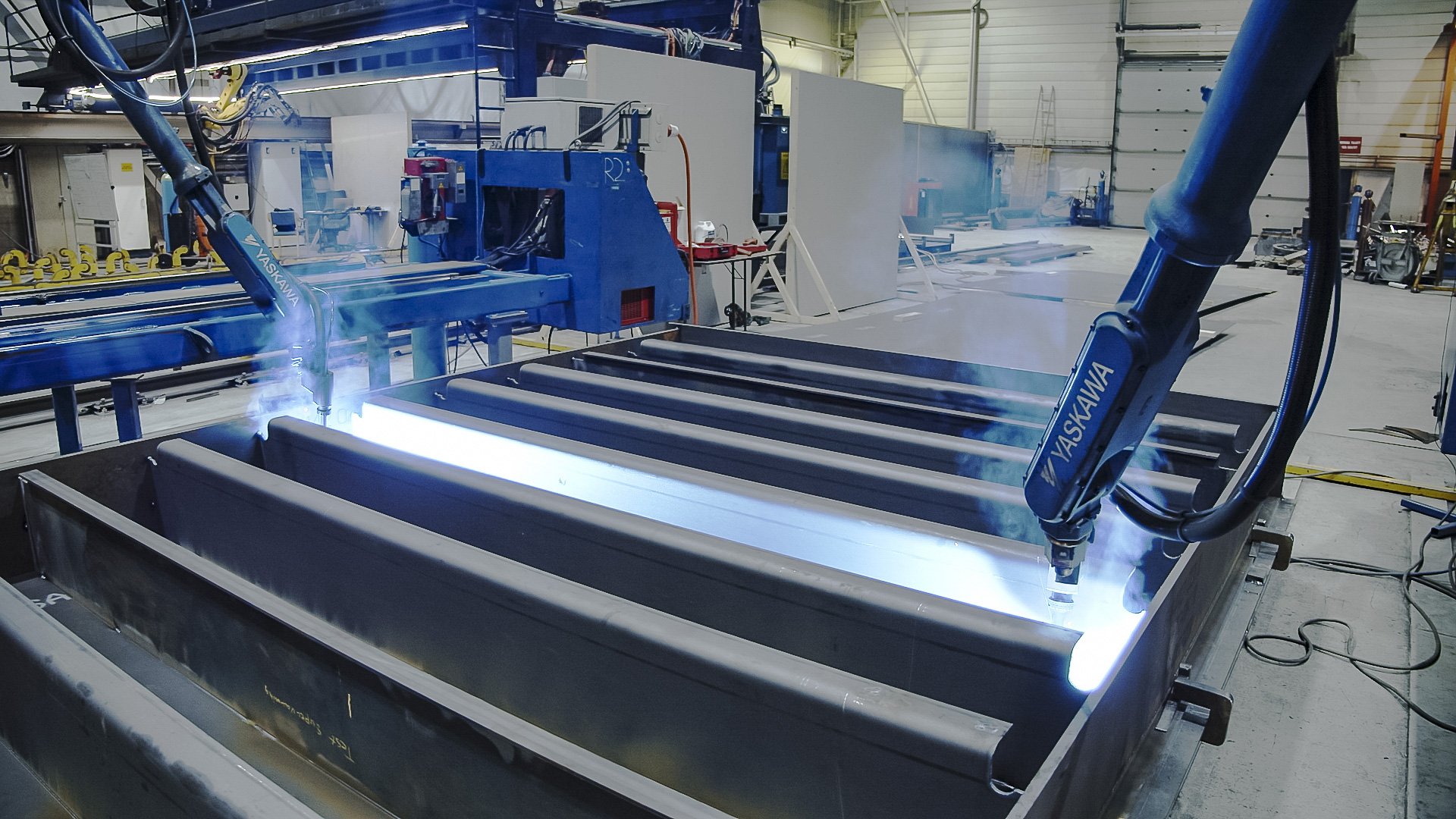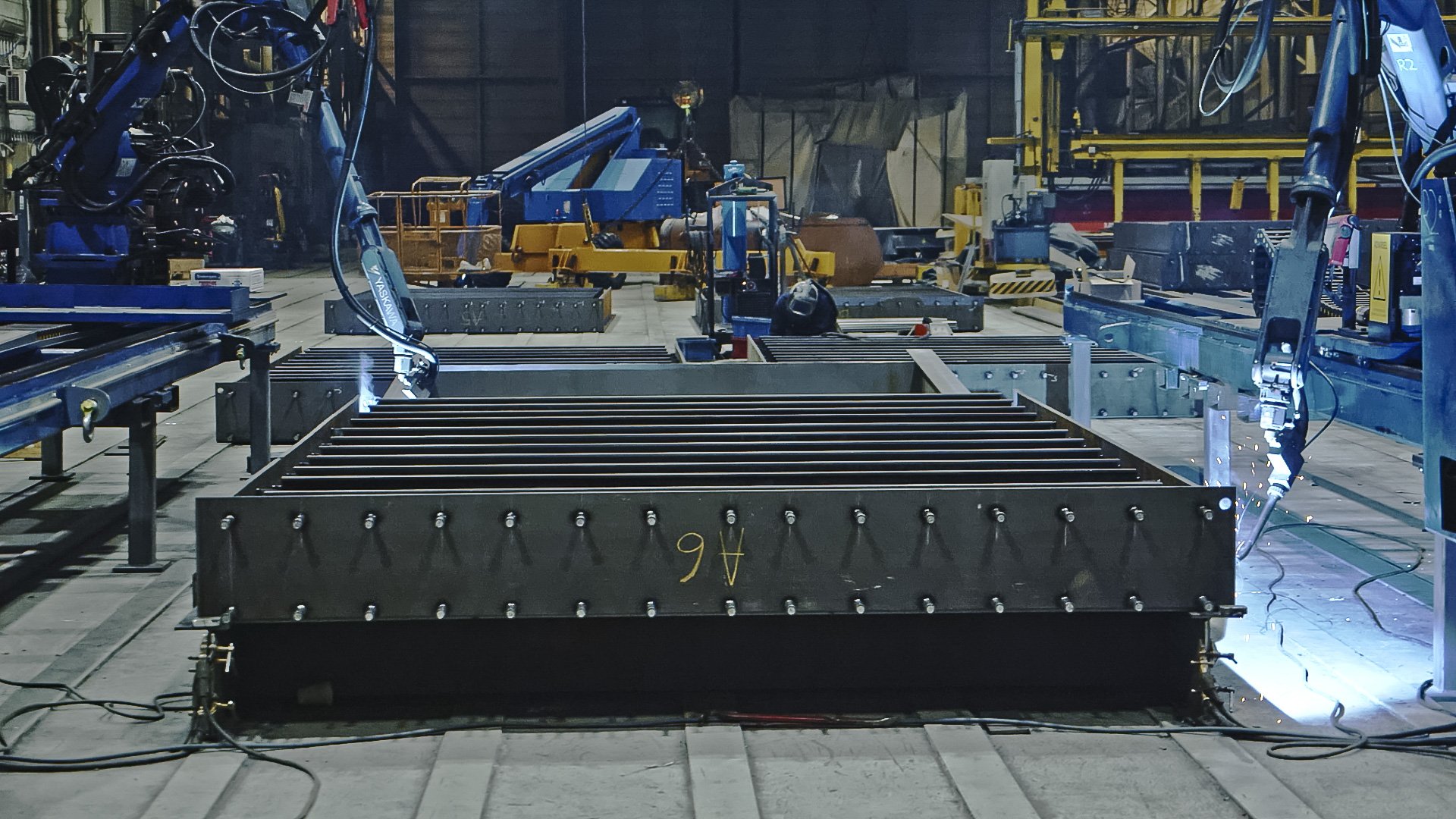Digital twin
Digital continuity is an important topic for us; thus, our methodology revolves around the usage of a digital twin. A 3D model of the physical assets is the base component of the twin and is working as a “data carrier” containing the necessary metadata and information. Physical behavior of the different components are analysed through suppliers data sheets and applied to the corresponding twin model. Kinematics of moving components are also defined, including inverse kinematics of robot manipulators. With the necessary mechanisms and kinematics in place, programming of the automated solutions in the twin is performed.
Real-time Data Capture
In a production setting, sensor and process data are collected and stored in the digital twin. This data can be used to analyze different parameters of the production execution, and thus improving efficiency.
Welding data is the main process that we capture data on in our own facility. Especially the laser welding equipment is monitored closely through an optical process observer, which enables us to locate errors in a weld in real-time during welding. This makes it possible to stop the welding process if something is out of the ordinary, and also help the operators to locate the errors to correct them.
Offline Programming
Programming in the digital twin is often referred to as offline programming. A completed program may be ran as a simulation on a computer or on the physical twin. The ability to simulate the process is an excellent method to visualize how the physical objects will move and interact with each other, as well as detecting clashes and other irregulatities in the program before it happens in the physical world.




